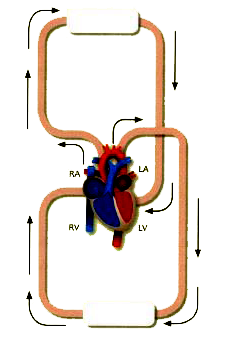Give a schematic diagram of life cycle of cockroach.
Step-by-Step Solution for the Life Cycle of Cockroach
1. Introduction to Cockroach:
- The cockroach is an insect that belongs to the phylum Arthropoda. This means it has jointed appendages.
2. Identification of Male and Female Cockroaches:
- In the life cycle, we start with the male and female cockroaches. The male has distinct characteristics such as the presence of a structure called the anal style, which is absent in females.
3. Fertilization:
- The life cycle begins with mating between the male and female cockroach, leading to fertilization.
4. Formation of Ootheca:
- After fertilization, the female cockroach produces an egg case known as the ootheca. This structure can contain around 10 to 16 eggs.
5. Egg Stage:
- The ootheca is deposited in a safe environment. After some time, the eggs develop and hatch.
6. Nymph Stage:
- Upon hatching, the young cockroaches, known as nymphs, emerge. They resemble miniature adults but lack wings.
7. Growth and Molting:
- Nymphs undergo several molts (ecdysis) as they grow, gradually developing into adult cockroaches. This process involves shedding their exoskeleton.
8. Adult Stage:
- After several molts, the nymphs mature into adult cockroaches. They develop wings and reproductive organs, completing the life cycle.
9. Cycle Repeats:
- The adult cockroaches can now reproduce, and the cycle continues.
Schematic Diagram
To create a schematic diagram, you can represent the life cycle of the cockroach with the following stages:
- Adult Cockroach (Male and Female)
- Fertilization
- Ootheca (Egg Case)
- Eggs
- Nymphs (Young Cockroaches)
- Molting Stages
- Adult Cockroach (Fully Developed)
- The cockroach is an insect that belongs to the phylum Arthropoda. This means it has jointed appendages.
- In the life cycle, we start with the male and female cockroaches. The male has distinct characteristics such as the presence of a structure called the anal style, which is absent in females.
- The life cycle begins with mating between the male and female cockroach, leading to fertilization.
- After fertilization, the female cockroach produces an egg case known as the ootheca. This structure can contain around 10 to 16 eggs.
- The ootheca is deposited in a safe environment. After some time, the eggs develop and hatch.
- Upon hatching, the young cockroaches, known as nymphs, emerge. They resemble miniature adults but lack wings.
- Nymphs undergo several molts (ecdysis) as they grow, gradually developing into adult cockroaches. This process involves shedding their exoskeleton.
- After several molts, the nymphs mature into adult cockroaches. They develop wings and reproductive organs, completing the life cycle.
- The adult cockroaches can now reproduce, and the cycle continues.
To create a schematic diagram, you can represent the life cycle of the cockroach with the following stages:
- Fertilization
- Ootheca (Egg Case)
- Eggs
- Nymphs (Young Cockroaches)
- Molting Stages
- Adult Cockroach (Fully Developed)
Topper's Solved these Questions
- MORPHOLOGY AND ANATOMY OF DIFFERENT SYSTEM OF COCKROACH BOOK - ICSECHAPTER - MORPHOLOGY AND ANATOMY OF DIFFERENT SYSTEM OF COCKROACH EXERCISE - Long Answer type Questions
6 Videos
- MORPHOLOGY AND ANATOMY OF DIFFERENT SYSTEM OF COCKROACH BOOK - ICSECHAPTER - MORPHOLOGY AND ANATOMY OF DIFFERENT SYSTEM OF COCKROACH EXERCISE - Very Short answer type questions (with answer)
30 Videos
- MINERAL NUTRITION BOOK - ICSECHAPTER - MINERAL NUTRITION EXERCISE - NCERT EXERCISE WITH ANSWER (DIFFERNTIATE BETWEEN )
9 Videos
- MORPHOLOGY OF FLOWERING PLANTS BOOK - ICSECHAPTER - MORPHOLOGY OF FLOWERING PLANTS EXERCISE - NCERT TEXTBOOK QUESTIONS WITH SOLUTIONS
25 Videos
Similar Questions
The life cycle of cord moss is
View SolutionGive a schematic diagram showing reduction of a molecule of nitrogen and formation of ammonia.
View SolutionDraw a labelled diagram of alimentary canal of a cockroach.
View SolutionDraw a labelled diagram of alimentary canal of a cockroach
View SolutionLabel the schematic diagram showing circulation of blood in the body.

View SolutionDraw a schematic ray diagram of a compound microscope with the final image formed at infinity.
View SolutionGive an illustrated account of the life cycle of a moss.
View SolutionGiven a schematic labelled diagram to represent oogenesis (without descriptions).
View SolutionPupa occurs in the life cycle of
View SolutionRepresent schematically the life cycle of a malarial parasite.
View Solution
